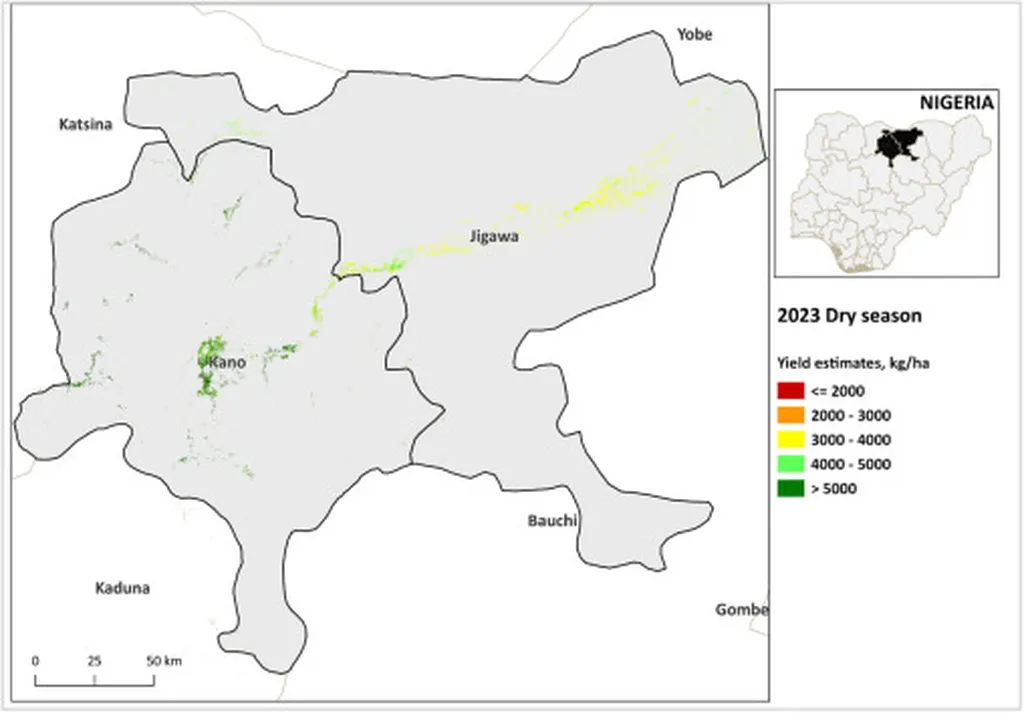In the heart of Nigeria, a groundbreaking study is transforming how we predict paddy rice yields, with implications that ripple through precision agriculture, food security, and even climate mitigation. Led by Sa’ad Ibrahim of the University of Leicester and Adamu Augie College of Education, this research leverages high-resolution PlanetScope imagery and machine learning to tackle a longstanding challenge in remote sensing: accurately estimating rice yields despite the complexities of rice plant phenology and soil background.
The study, published in the journal *Smart Agricultural Technology* (translated as “Intelligent Agricultural Technology”), extracted vegetation indices from PlanetScope imagery to capture the optimal growth stages of rice. By combining these indices with field observations collected in 2024, the researchers developed a novel framework using recursive feature elimination (RFE) and mutual information regression (MIR) to enhance yield predictions. This framework was then tested on four machine learning algorithms: random forest (RF), extreme gradient boosting (XGBoost), k-nearest neighbors (k-NN), and artificial neural networks (ANN).
The results were striking. All machine learning algorithms performed optimally when feature selection was applied, with k-NN emerging as the top performer, achieving an R² of 0.61 and an RMSE of 578.43 kg/ha. “k-NN outperformed all models, but what’s truly exciting is how ANN performed with just a few spectral features,” Ibrahim noted. “This suggests that even with limited data, we can achieve robust predictions, which is a game-changer for resource-constrained regions.”
The study also revealed that while k-NN, RF, and XGBoost are sensitive to parameter optimization, ANN showed remarkable efficiency with minimal spectral features. The RF model explained 44% of the variance in the data, reducing the Root Mean Square Error (RMSE) by 29.41% and bias by 67%. XGBoost also showed improvement, with a 13.33% increase in explained variance and a 3.25% decrease in RMSE.
These findings have significant commercial implications, particularly for the energy sector. Paddy rice is a major source of methane emissions, a potent greenhouse gas. Accurate yield predictions can help optimize resource distribution, reduce emissions, and support climate-smart agriculture. “This research isn’t just about improving crop yields; it’s about creating a more sustainable future,” Ibrahim explained. “By providing near-real-time yield estimates, we can help farmers, researchers, and policymakers make informed decisions that benefit both the environment and the economy.”
The mapping framework developed in this study could revolutionize spatial planning, enabling precision agriculture and enhancing food security. As the world grapples with climate change and food shortages, this research offers a beacon of hope, demonstrating how technology and innovation can drive sustainable development.
In the words of Ibrahim, “The future of agriculture lies in our ability to harness data and technology to make smarter, more informed decisions. This study is just the beginning.” With the insights gained from this research, the path forward is clearer than ever.

